Bank of America 2012 Annual Report Download - page 113
Download and view the complete annual report
Please find page 113 of the 2012 Bank of America annual report below. You can navigate through the pages in the report by either clicking on the pages listed below, or by using the keyword search tool below to find specific information within the annual report.-
 1
1 -
 2
2 -
 3
3 -
 4
4 -
 5
5 -
 6
6 -
 7
7 -
 8
8 -
 9
9 -
 10
10 -
 11
11 -
 12
12 -
 13
13 -
 14
14 -
 15
15 -
 16
16 -
 17
17 -
 18
18 -
 19
19 -
 20
20 -
 21
21 -
 22
22 -
 23
23 -
 24
24 -
 25
25 -
 26
26 -
 27
27 -
 28
28 -
 29
29 -
 30
30 -
 31
31 -
 32
32 -
 33
33 -
 34
34 -
 35
35 -
 36
36 -
 37
37 -
 38
38 -
 39
39 -
 40
40 -
 41
41 -
 42
42 -
 43
43 -
 44
44 -
 45
45 -
 46
46 -
 47
47 -
 48
48 -
 49
49 -
 50
50 -
 51
51 -
 52
52 -
 53
53 -
 54
54 -
 55
55 -
 56
56 -
 57
57 -
 58
58 -
 59
59 -
 60
60 -
 61
61 -
 62
62 -
 63
63 -
 64
64 -
 65
65 -
 66
66 -
 67
67 -
 68
68 -
 69
69 -
 70
70 -
 71
71 -
 72
72 -
 73
73 -
 74
74 -
 75
75 -
 76
76 -
 77
77 -
 78
78 -
 79
79 -
 80
80 -
 81
81 -
 82
82 -
 83
83 -
 84
84 -
 85
85 -
 86
86 -
 87
87 -
 88
88 -
 89
89 -
 90
90 -
 91
91 -
 92
92 -
 93
93 -
 94
94 -
 95
95 -
 96
96 -
 97
97 -
 98
98 -
 99
99 -
 100
100 -
 101
101 -
 102
102 -
 103
103 -
 104
104 -
 105
105 -
 106
106 -
 107
107 -
 108
108 -
 109
109 -
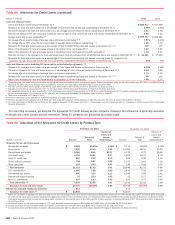 110
110 -
 111
111 -
 112
112 -
 113
113 -
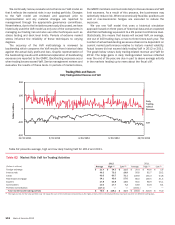 114
114 -
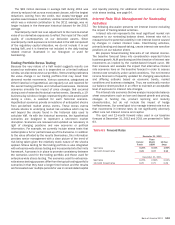 115
115 -
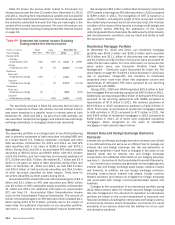 116
116 -
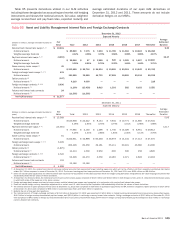 117
117 -
 118
118 -
 119
119 -
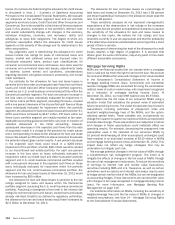 120
120 -
 121
121 -
 122
122 -
 123
123 -
 124
124 -
 125
125 -
 126
126 -
 127
127 -
 128
128 -
 129
129 -
 130
130 -
 131
131 -
 132
132 -
 133
133 -
 134
134 -
 135
135 -
 136
136 -
 137
137 -
 138
138 -
 139
139 -
 140
140 -
 141
141 -
 142
142 -
 143
143 -
 144
144 -
 145
145 -
 146
146 -
 147
147 -
 148
148 -
 149
149 -
 150
150 -
 151
151 -
 152
152 -
 153
153 -
 154
154 -
 155
155 -
 156
156 -
 157
157 -
 158
158 -
 159
159 -
 160
160 -
 161
161 -
 162
162 -
 163
163 -
 164
164 -
 165
165 -
 166
166 -
 167
167 -
 168
168 -
 169
169 -
 170
170 -
 171
171 -
 172
172 -
 173
173 -
 174
174 -
 175
175 -
 176
176 -
 177
177 -
 178
178 -
 179
179 -
 180
180 -
 181
181 -
 182
182 -
 183
183 -
 184
184 -
 185
185 -
 186
186 -
 187
187 -
 188
188 -
 189
189 -
 190
190 -
 191
191 -
 192
192 -
 193
193 -
 194
194 -
 195
195 -
 196
196 -
 197
197 -
 198
198 -
 199
199 -
 200
200 -
 201
201 -
 202
202 -
 203
203 -
 204
204 -
 205
205 -
 206
206 -
 207
207 -
 208
208 -
 209
209 -
 210
210 -
 211
211 -
 212
212 -
 213
213 -
 214
214 -
 215
215 -
 216
216 -
 217
217 -
 218
218 -
 219
219 -
 220
220 -
 221
221 -
 222
222 -
 223
223 -
 224
224 -
 225
225 -
 226
226 -
 227
227 -
 228
228 -
 229
229 -
 230
230 -
 231
231 -
 232
232 -
 233
233 -
 234
234 -
 235
235 -
 236
236 -
 237
237 -
 238
238 -
 239
239 -
 240
240 -
 241
241 -
 242
242 -
 243
243 -
 244
244 -
 245
245 -
 246
246 -
 247
247 -
 248
248 -
 249
249 -
 250
250 -
 251
251 -
 252
252 -
 253
253 -
 254
254 -
 255
255 -
 256
256 -
 257
257 -
 258
258 -
 259
259 -
 260
260 -
 261
261 -
 262
262 -
 263
263 -
 264
264 -
 265
265 -
 266
266 -
 267
267 -
 268
268 -
 269
269 -
 270
270 -
 271
271 -
 272
272 -
 273
273 -
 274
274 -
 275
275 -
 276
276 -
 277
277 -
 278
278 -
 279
279 -
 280
280 -
 281
281 -
 282
282 -
 283
283 -
 284
284
 |
 |

Bank of America 2012 111
The histogram below is a graphic depiction of trading volatility
and illustrates the daily level of trading-related revenue for 2012
and 2011. During 2012, positive trading-related revenue was
recorded for 98 percent, or 243 of the 249 trading days of which
80 percent (199 days) were daily trading gains of over $25 million,
less than one percent (1 day) of the trading days had losses greater
than $25 million and the largest loss was $50 million. This is
compared to 2011, where positive trading-related revenue was
recorded for 86 percent, or 214 of the 250 trading days of which
66 percent (165 days) were daily trading gains of over $25 million,
five percent (12 days) of the trading days had losses greater than
$25 million and the largest loss was $119 million.
To evaluate risk in our trading activities, we focus on the actual
and potential volatility of individual positions as well as portfolios.
VaR is a key statistic used to measure market risk. In order to
manage day-to-day risks, VaR is subject to trading limits both for
our overall trading portfolio and within individual businesses. All
trading limit excesses are communicated to management for
review.
A VaR model simulates the value of a portfolio under a range
of hypothetical scenarios in order to generate a distribution of
potential gains and losses. VaR represents the loss the portfolio
is expected to experience within a given confidence level based
on historical data. With any VaR model, there are significant and
numerous assumptions that will differ from company to company.
In addition, the accuracy of a VaR model depends on the availability
and quality of historical data for each of the positions in the
portfolio. A VaR model may require additional modeling
assumptions for new products that do not have extensive historical
price data or for illiquid positions for which accurate daily prices
are not consistently available.
A VaR model is an effective tool in estimating ranges of potential
gains and losses on our trading portfolios. There are, however,
many limitations inherent in a VaR model as it utilizes historical
results over a defined time period to estimate future performance.
Historical results may not always be indicative of future results
and changes in market conditions or in the composition of the
underlying portfolio could have a material impact on the accuracy
of the VaR model. In order for the VaR model to reflect current
market conditions, we update the historical data underlying our
VaR model on a bi-weekly basis and regularly review the
assumptions underlying the model. Our VaR model utilizes three
years of historical data. This time period was chosen to ensure
that VaR reflects both a broad range of market movements as well
as being sensitive to recent changes in market volatility. In
addition, certain types of risks associated with positions that are
illiquid and/or unobservable are not included in VaR. If these risks
are determined to be material, the VaR model results will be
supplemented.
